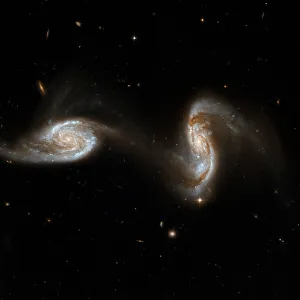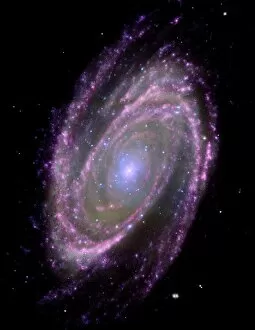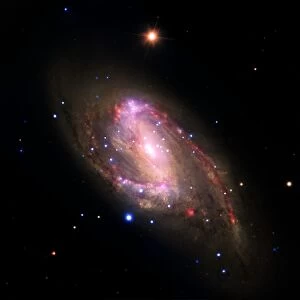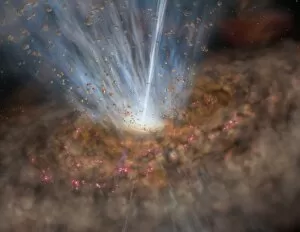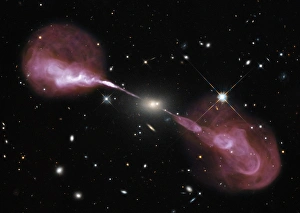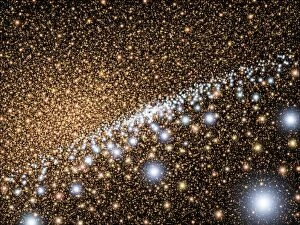Supermassive Black Hole Collection
"Unveiling the Cosmic Giants: Exploring Supermassive Black Holes and Interacting Galaxies" In a mesmerizing cosmic dance
All Professionally Made to Order for Quick Shipping
"Unveiling the Cosmic Giants: Exploring Supermassive Black Holes and Interacting Galaxies" In a mesmerizing cosmic dance, interacting galaxies NGC 5257 and 5258 showcase their celestial waltz. The spiral galaxy M81 takes center stage in a captivating composite image, revealing its intricate beauty. Another stunning composite image unveils the enigmatic spiral galaxy NGC 3627, showcasing its ethereal charm. Amidst this cosmic symphony, we encounter the awe-inspiring supermassive black hole—an artistic representation that captivates our imagination with its mysterious allure. Further into the cosmos, we stumble upon Mrk 231 galactic black hole and NGC 4889 galactic black hole—both depicted through exquisite artwork that transports us to distant realms. The Hercules A galactic jets astound us with their powerful display of energy—a breathtaking sight captured in a remarkable composite image. Quasar candidates emerge from WISE images like distant beacons of light, inviting us to unravel their secrets. Delving deeper into space exploration, hot dust-obscured galaxies reveal themselves through WISE imagery—a glimpse into hidden corners of our vast universe. Once again, quasar candidates grace our presence in another striking WISE image—an invitation to embark on an extraordinary journey of discovery. As we contemplate these wonders beyond comprehension, an artistic rendition of a supermassive black hole reminds us of the immense forces at play within our cosmos. Colliding galaxies serve as a reminder that even amidst chaos and destruction lies boundless potential for creation. These glimpses into the realm of supermassive black holes and interacting galaxies ignite our curiosity and inspire further exploration. They remind us that within this infinite expanse lies endless beauty waiting to be discovered—the mysteries yet untangled by human minds eager for knowledge.

